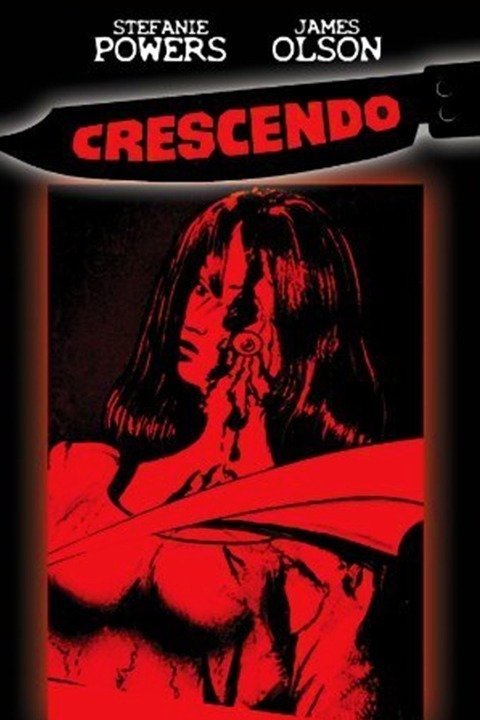“Morally Mixed”

| None | Light | Moderate | Heavy | |
|---|---|---|---|---|
| Language | ||||
| Violence | ||||
| Sex | ||||
| Nudity |
What You Need To Know:
MEMOIRS OF A GEISHA is beautifully photographed, designed and acted. The movie deals directly, but discreetly, with the sexual themes of being a geisha. Also, although the geisha does not sell her body to many men like a common prostitution, there are elements of prostitution in being a geisha. Thus, MOVIEGUIDE® advises extreme caution.
Content:
Strong, morally mixed Romantic worldview where viewers are asked to sympathize with the heroine whose main goal turns out to be personal happiness with the man she loves (the worldview also seems to be subtly attacking some Japanese traditions while at least accepting, if not embracing, others), with moral elements that implicitly attack slavery, jealousy and harsh treatment and show personal codes of honor among some people, and some redemptive, Christian-sounding type of content wherein a scene of forgiveness for an immoral act, which includes a personal revelation of truth, solves the plot problem but the goal in solving the problem is an earthly goal involving personal happiness, as well as heroine prays in a Buddhist temple and her prayer seems to be eventually answered in a roundabout fashion, but there are no other major references to Buddhism or to religion of any kind, and some unbalanced anti-American content in the final act where American soldiers act badly or seem smarmy (no good Americans are shown);
No foul language;
Minor violence such as women fight and struggle in two or three scenes, arson is committed and Sumo wrestling shown;
Themes of prostitution such as woman’s virginity is sold to the highest bidder and there is a scene showing the man taking woman to his bed, a metaphorical euphemism is used to describe intercourse, father sells his two young daughters to a geisha house, and geisha lures American colonel into her boudoir so she can shoo away an unwanted suitor (colonel kisses her face and neck while they are lying down but nothing else is shown);
Upper male nudity and men take traditional hot-tub bath with three geisha women;
Alcohol use;
Smoking;
Slavery, intense jealousy and women make a wager.
More Detail:
The movie opens in 1929 in Japan, where a poor fisherman whose wife is dying sells his two daughters to a geisha house in Kyoto. Separated from her sister, who is sent away and eventually escapes and disappears forever, 9-year-old Chiyo is groomed to become a top geisha. Chiyo soon rouses the jealousy of the head geisha, Hatsumomo, who gets Chiyo into trouble with the female owner of the geisha house, who is called Mother Nitta. Mother decides to keep Chiyo as her slave instead of using her money to groom Chiyo into a geisha who can attract the attentions and money of a rich male patron or danna. After one failed attempt at escaping, Chiyo decides to bide her time and hopefully escape another day.
One day on the street, however, the Chairman of the local power company, accompanied by two adult geisha, sees little Chiyo and kindly buys her a snow cone. Chiyo decides that she will do whatever she can to become a top geisha so that, one day, the Chairman will want to be her patron.
Soon thereafter, a top geisha named Mameha, somewhat older than Hatsumomo, but still beautiful, visits Mother Nitta and offers to train Chiyo to become a top geisha. Mother Nitta will pay for the training, but Mameha will pay her back if Chiyo fails in her debut. If, however, Chiyo succeeds, Mameha will become Chiyo’s permanent mentor.
Under Mameha’s training, Chiyo becomes the geisha named Sayuri. Of course, at 15, she succeeds beautifully in her debut performance and eventually becomes the toast of high society and the business world. Mameha even takes her on an outing to a Sumo wrestling match with the Chairman and his taciturn friend Nobu. The right side of Nobu’s face is terribly scarred from saving the Chairman’s life during the Japanese invasion of Manchuria. Unhappily, Hatsumomo also appears at the Sumo match. To take Hatsumomo’s attention off Chiyo, Mameha orders Chiyo to divert her attention to Nobu so that Hatsumomo will not try to interfere with Chiyo’s pursuit of Nobu as a potential patron. This threatens to put a halt on Chiyo’s plan to win the Chairman as her patron. Although a geisha is only half a wife to her patron, being a geisha to the Chairman is the only way that Chiyo can be near her true love. The Chairman, however, owes Nobu his life and is devoted to his friend’s happiness. Thus, he would never do anything overtly to betray his friend, like becoming Chiyo’s patron.
The fire bombings of Japan during World War II put an end to Chiyo’s geisha world. Nobu and the Chairman help send Chiyo away to the countryside for her protection (Mameha is sent elsewhere), while they remain in Kyoto. After the war, the promise of American contracts with Japanese businessmen, and the promise of being near the Chairman once again, lures Chiyo back into the exotic geisha world.
In the end, Chiyo uses her sexual attraction in a scheme to shame Nobu so that he will forget about her and so that she can be free to win the attention of the Chairman. Her scheme backfires, however. Only an act of forgiveness and revelation from an unexpected source can help her win the personal happiness she seeks.
MEMOIRS OF A GEISHA is beautifully photographed, designed and acted. Rob Marshall is clearly an excellent director with an impressive visual flair. The actresses are also superb, although most of them seem to be Chinese, not Japanese. Thus, it’s hard to say how well this movie will play in Japan. That said, Ken Watanabe is Japanese and he is very kind and noble as the handsome Chairman. As an actor, he makes a perfect love interest for Chiyo, who is portrayed beautifully by Suzuko Ohgo as a young girl and by Ziyi Zhang as a teenager and an adult. Ziyi Zhang is clearly one of the world’s best actresses, along with Michelle Yeoh, who plays Mameha and Gong Li as Hatsumomo. Given the right role, these women seldom miss a beat.
A geisha is a female entertainer, dancer, musician, companion, and mistress to her patron. Thus, although a geisha is not a prostitute in the traditional sense, there are elements of prostitution in her social role. As shown by this movie, there are also elements of slavery in her role, or at least there used to be. Also, her virginity is sold to the highest bidder, probably to ensure that the geisha will never become the wife of anybody. This is what happens to Chiyo in one short sequence in the movie.
Thus, there are sexual themes, including allusions to prostitution, in MEMOIRS OF A GEISHA that are designed for an adult audience. The movie portrays these themes in a discreet, though clear, manner. That said, the movie is an enlightening, and at times heartbreaking, Romantic look into a mysterious world. It does not usually, however, look at the geisha society from a moral perspective. The movie’s purpose is not to morally condemn outright this Japanese social practice. In fact, Chiyo uses the geisha world to win the love of the Chairman, even though she realizes that a geisha is only half a wife to her patron.
Some may feel that MEMOIRS OF A GEISHA makes the geisha tradition too glamorous. It may be argued that that’s because the geisha, in her beautiful makeup and kimono, and her flowing dance moves, is a glamorous sight indeed. The problem is, however, that the female characters in the movie seem resigned to their fate of being a geisha. Therefore, extreme caution is advised.
It should also be noted that the final act of the movie deals partially with the American occupation of Japan after World War II. The streets become filled with American soldiers. Although it’s not done in a melodramatic or preachy fashion, all of the American soldiers portrayed for any length of time seem gauche or smarmy. We don’t want to blow these brief portrayals out of proportion, but this is an unbalanced view of the American armed forces and Americans that will unnecessarily damage America’s image overseas. Since all of the soldiers shown are also white, this content element also smacks of racism. Of course, the movie is shot from Chiyo’s point of view, so we could say that this content perhaps reflects her own Japanese prejudices. Be that as it may, it would have been nice if the movie had portrayed at least one American soldier in a sympathetic light.
The good news is that MEMOIRS OF A GEISHA does use forgiveness to solve the plot problem. It also shows the horrors of female slavery, being sold to live a life as a sex object. Also, despite their use of geishas, both Nobu and the Chairman are otherwise shown to be honorable, kind men. Thus, the movie has a morally mixed Romantic worldview that lightly extols honor, kindness and forgiveness. A stronger moral emphasis perhaps could have turned this movie, however, into a truly great film.


 - Content:
- Content: 



